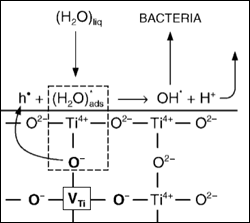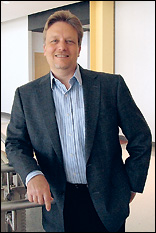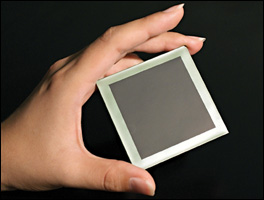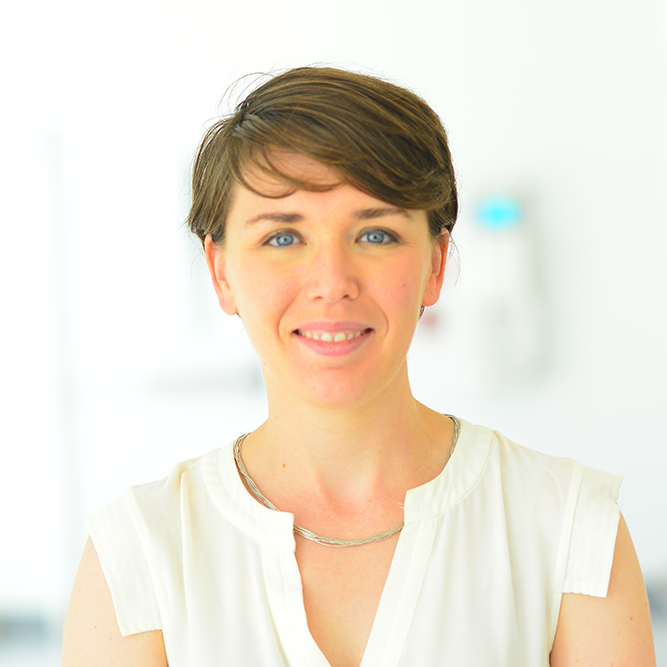News Story
Using Solar Energy to Make Safer Drinking Water

Schematic representation of effect of titanium vacancies on partial water oxidation leading to formation of hydroxyl radicals.
University of Maryland Energy Research Center director and Department of Materials Science and Engineering professor Eric Wachsman has received the Institute of Materials, Minerals and Mining’s (IOM3) 2014 Pfeil Award for a paper describing the use of titanium dioxide (TiO2) for solar water disinfection. The innovation, the result an international collaboration with researchers at the University of Western Sydney, Australia, is designed to produce safer drinking water in remote locations and disaster areas, particularly those without electricity.
The removal of harmful microorganisms from water using solar energy, explains Wachsman, is an emerging technology and “the realistic option” for addressing water shortages around the world. The process requires a high-performance photocatalyst, a material that accelerates a desired chemical reaction when stimulated by light. Wachsman and his colleagues have focused on TiO2, a common raw material that can be used to make semiconductors with properties they have customized for photocatalytic performance.
When exposed to light, TiO2 reacts with water to produce “active species,” including hydrogen peroxide (H2O2) and hydroxide (OH–), which kill microorganisms in the water. Wachsman and his primary collaborator, University of Western Sydney professor Janusz Nowotny (division of Solar Energy Technologies), discovered that the TiO2 performed best when it included a particular defect in its molecular lattice.
No crystal is perfect, and in metals like TiO2, naturally occurring defects contribute to their mechanical properties, sometimes in positive ways. Wachsman and Nowotny discovered that TiO2 with point defects—imperfections consisting of a single atom missing or out of alignment—were most effective in solar disinfection. They are now deliberately introducing these defects to the metal in a controlled manner, which allows them to produce an optimized photocatalyst with the exact properties they need.
Wachsman and Nowotny’s collaborators on the work include Associate Professor Tad Bak, from the University of Western Sydney’s division of Solar Energy Technologies, and Nikolaus J. Sucher from its Centre for Complementary Medicine Research. The team will receive the Pfeil Award at IOM3’s Special Awards and Publications Dinner in October 2014.
For More Information:
T. Bak, J. Nowotny, N.J. Sucher, E.D. Wachsman. Photocatalytic water disinfection on oxide semiconductors: Part 1 – Basic concepts of TiO2 photocatalysis. Materials Science and Engineering: R: Reports 74:12, 377-406. Abstract
Published May 18, 2014











